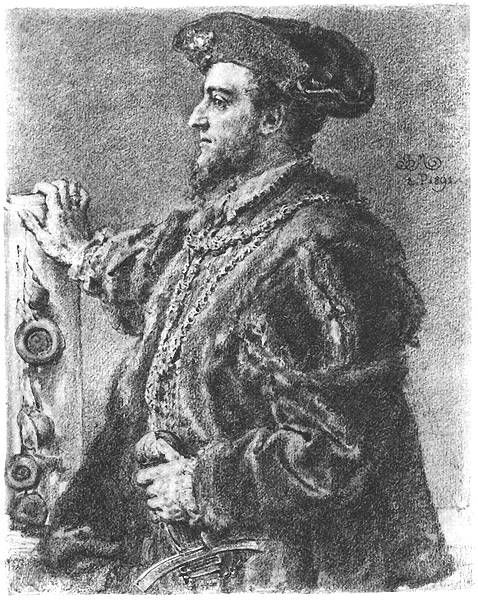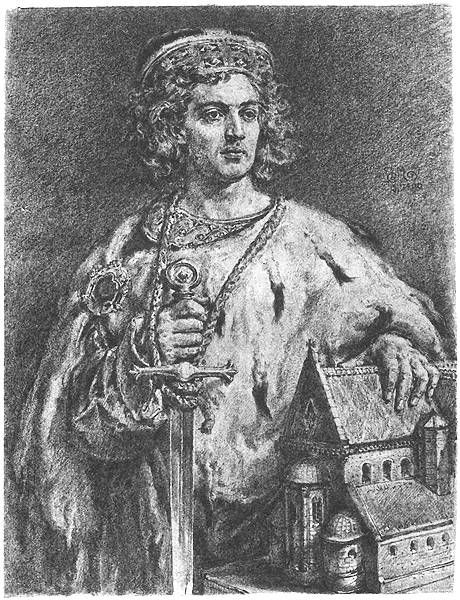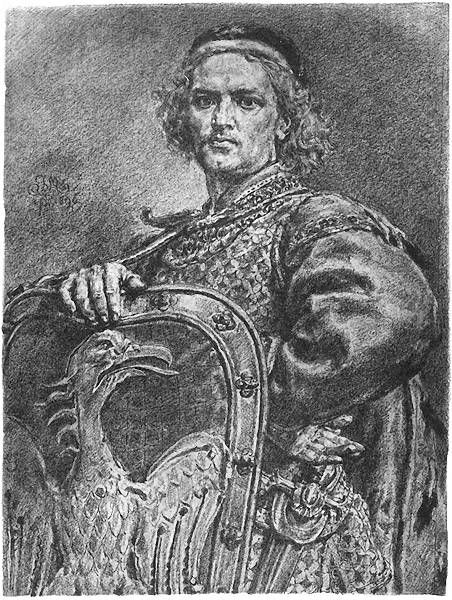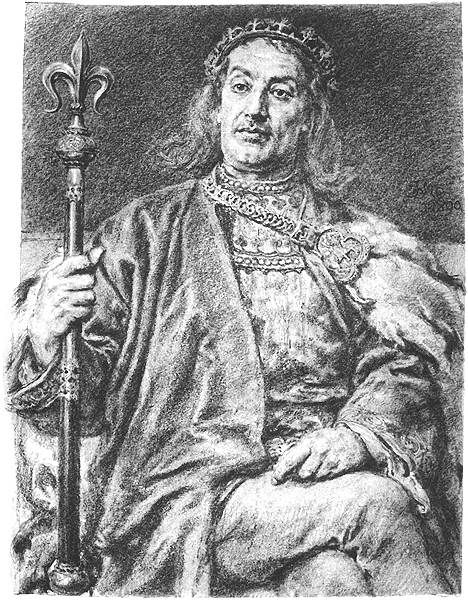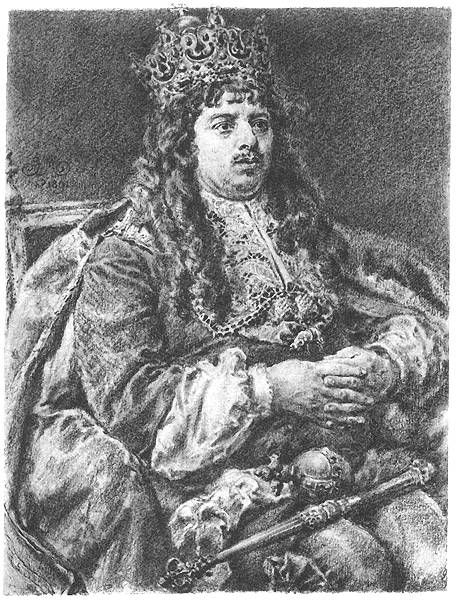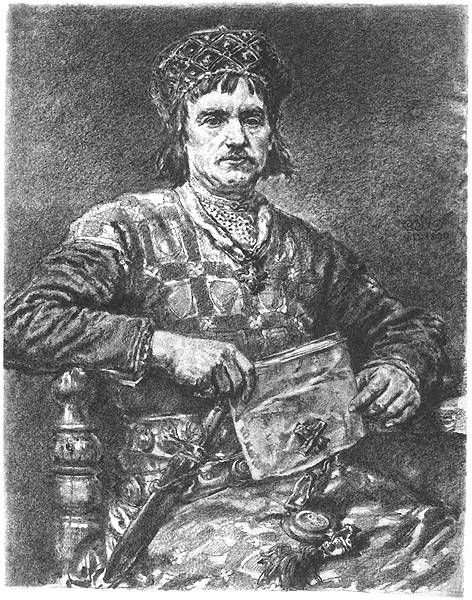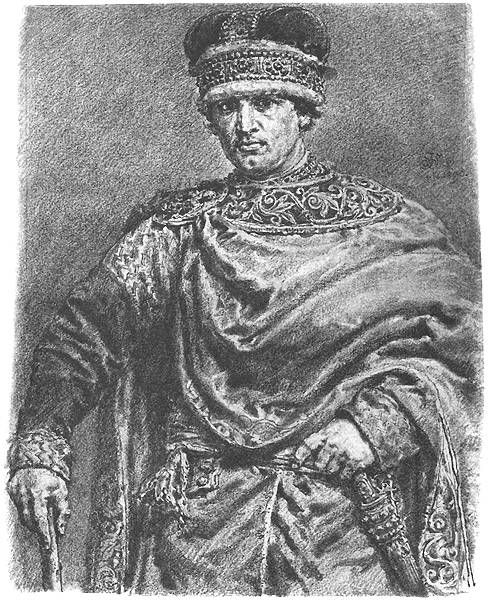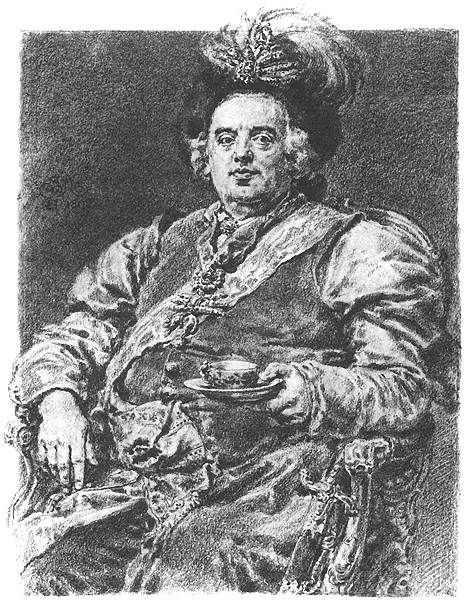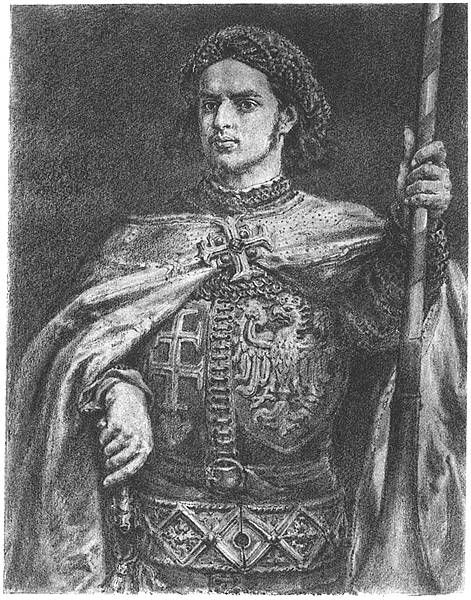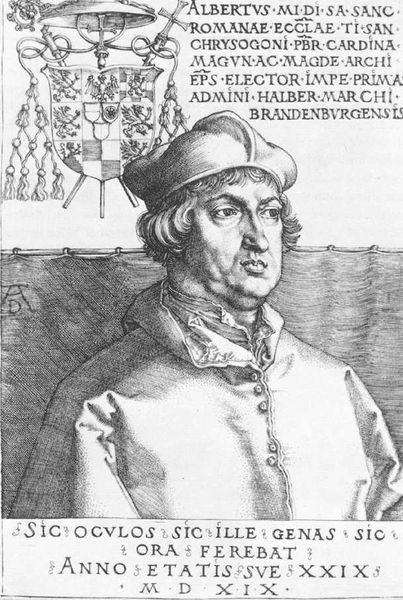
drawing, pencil, charcoal
#
portrait
#
drawing
#
charcoal drawing
#
11_renaissance
#
pencil drawing
#
pencil
#
portrait drawing
#
charcoal
#
history-painting
Copyright: Public domain
Jan Matejko made this drawing of Alexander Jagiellon in 1891, using graphite or charcoal on paper. Note how the very qualities of the medium influence the appearance of the artwork. The artist coaxes a full range of tonal values from the material, from the light areas of the face to the shadows defining the subject's garments. Each stroke of the graphite is visible, the artist is able to imbue the subject with a sense of weight, volume, and texture. This process is about conveying the social status and cultural significance of the sitter, while simultaneously showing the labor involved in the production of the artwork. The qualities of graphite—its accessibility, its ease of use—allowed Matejko to create this representation of power. The artist engages with traditions of academic drawing, infusing it with a sense of immediacy and directness. This choice of a readily available material ties into wider social issues of labor, politics, and consumption, inviting us to consider the role of art within society. By emphasizing materials, making, and context, we can deepen our understanding of this artwork and challenge traditional distinctions between fine art and craft.
Comments
No comments
Be the first to comment and join the conversation on the ultimate creative platform.
